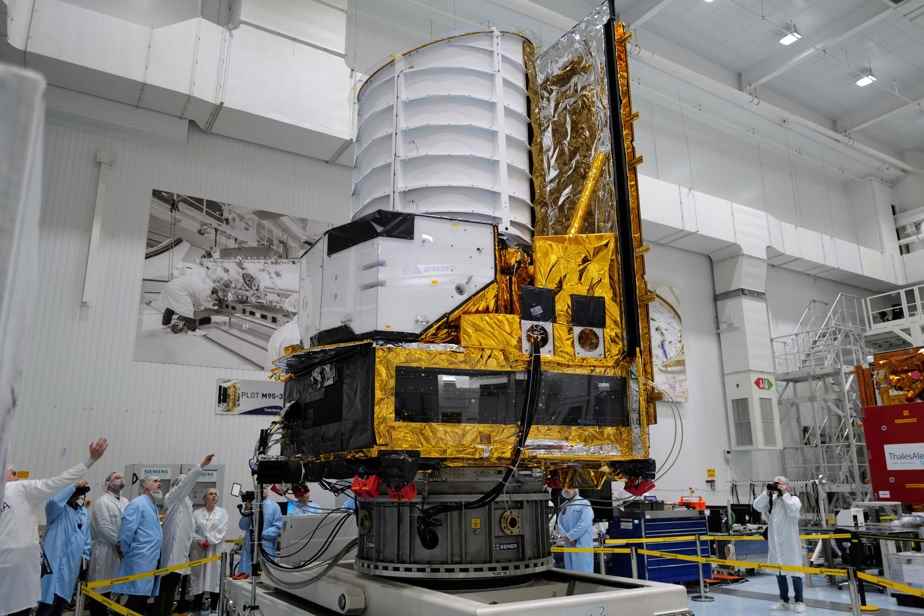(Cannes) The European space telescope Euclid still rests in a sterile room, in Cannes, adorned with a sun-colored dress. In a few months, he will launch into space to try to shed light on two great mysteries of the Universe: dark matter and dark energy.
These two elements, purely theoretical and invisible, constitute 95% of the Universe, but we know almost nothing of their exact nature. A lack of knowledge that the head of the mission, Giuseppe Racca, describes as “cosmic embarrassment”.
Dark matter is believed to explain why, among other things, galaxies do not disperse into swarms of stars. As for dark energy, its existence is necessary to explain the acceleration of the expansion of the Universe.
In an attempt to lift the veil on these mysteries, the mission of the European Space Agency (ESA) will draw up a three-dimensional map of the Universe, encompassing two billion galaxies over a portion of a third of the visible sky.
The third dimension of the map will be time. Because by capturing the light of galaxies that took up to ten billion years to reach us, Euclid will dive into the distant past of the Universe, born 13.8 billion years ago.
The two-ton ship, 4.7 meters high and 3.5 meters wide, was presented to the press for the first time this week, in a sterile white room of the Thales Alenia Space group in Cannes.
Measure absence
He will still undergo a handful of tests before leaving for Cape Canaveral, Florida. Its launch is to take place on a SpaceX Falcon 9 rocket, between the 1er and July 30. The originally planned flight on a Russian Soyuz rocket was canceled due to sanctions affecting Russia after its invasion of Ukraine.
Euclid will reach a position close to that of the James Webb Space Telescope, 1.5 million kilometers from Earth, guaranteeing it permanent exposure to the sun from its solar panels.
Its first images are expected next October, but it will take much longer for any discoveries, after the analysis of the mountains of data that Euclid will deliver.
The European mission, at a cost of 1.5 billion euros (2.15 billion $ CAN), must last until 2029, with a few bonus years “if nothing unusual happens”, explained to press the head of the mission.
How will Euclid – which owes its name to the father of geometry – proceed to observe the invisible? By measuring his absence.
Light from a very distant object, such as a galaxy, is imperceptibly deflected by the visible matter and dark matter it encounters on the way to the observer. This is the weak gravitational lensing effect.
Wobbly understanding
“By subtracting the visible matter, we can ‘calculate’ the presence of dark matter which is between” the distant object and the observer, declares Giuseppe Racca.
For this, Euclid has two instruments: a telescope 1.2 meters in diameter and an infrared spectrometer and photometer (NISP).
Euclid has the particularity of the width of its field of observation, equivalent to the surface of “two full moons”, indicates David Elbaz, astrophysicist at the Commissariat for Atomic Energy (CEA).
This field will allow Euclid to locate massive structures – such as black holes – that the James Webb telescope cannot identify because “its field of observation is too small”, explains to AFP the scientific manager of the project, Rene Laureijs.
Our understanding of the Universe remains flawed. For example, two very precise measurements of the rate of expansion of the Universe currently give two different answers: an inconsistency called the Hubble tension, in which dark energy could play a role.
And this week, the James Webb telescope detected six galaxies much more massive than expected, in the remote ages of the Universe (between 500 and 700 million years after the Big Bang).
Euclid could be “the only tool” capable of answering these questions, according to David Elbaz.
